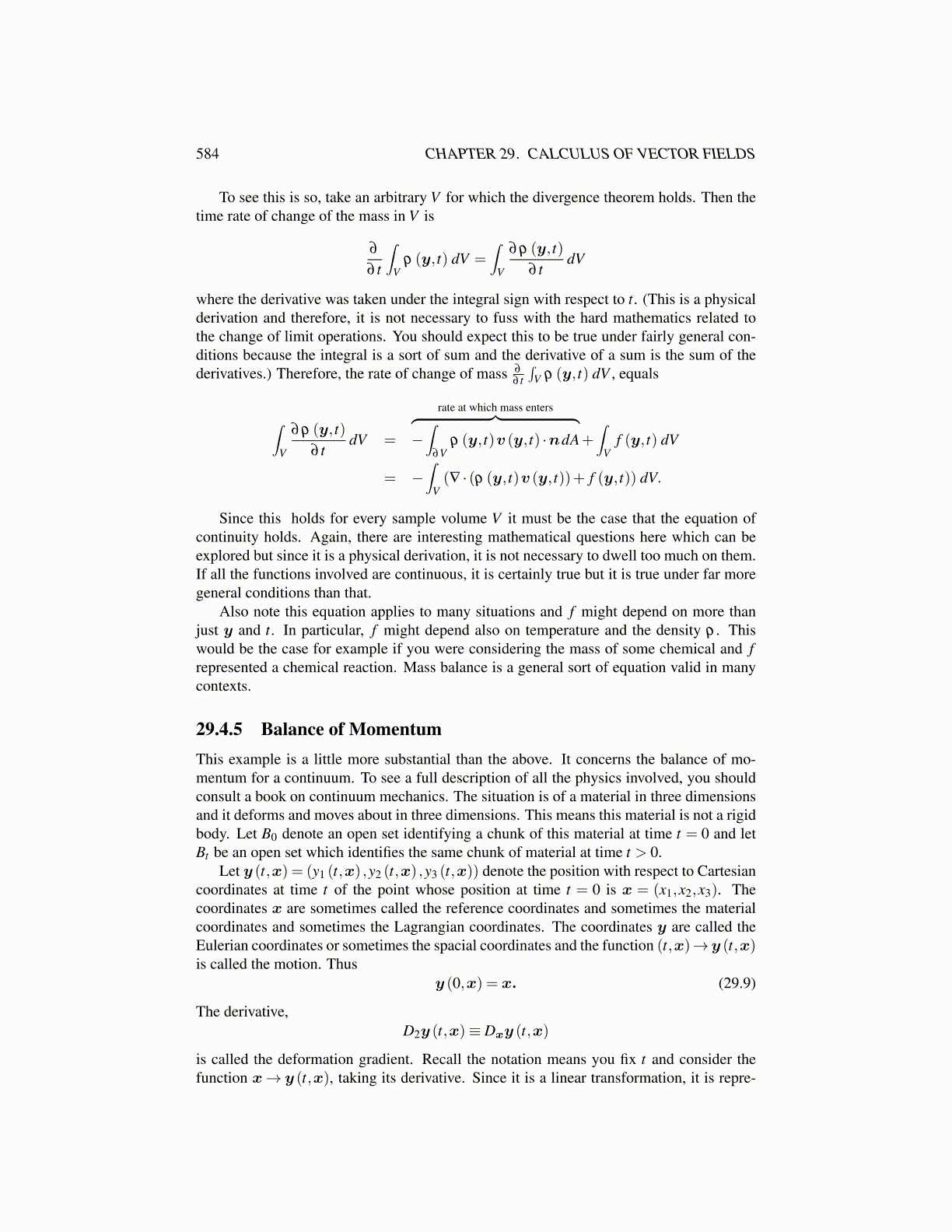
584 CHAPTER 29. CALCULUS OF VECTOR FIELDS
By the chain rule this equals∫D
Ti j (y (s, t))(
∂y
∂xα
∂xα
∂ s× ∂y
∂xβ
∂xβ
∂ t
)jdsdt.
Summation over repeated indices is used. Remember y = y (t,x) and it is always assumedthe mapping x→ y (t,x) is one to one and so, since on the surface ∂Vt near y, the pointsare functions of (s, t), it follows x is also a function of (s, t). Now by the properties of thecross product, this last integral equals∫
DTi j (x(s, t))
∂xα
∂ s∂xβ
∂ t
(∂y
∂xα
× ∂y
∂xβ
)jdsdt (29.12)
where here x(s, t) is the point of ∂V0 which corresponds with y (s, t) ∈ ∂Vt . Thus
Ti j (x(s, t)) = Ti j (y (s, t)) .
(Perhaps this is a slight abuse of notation because Ti j is defined on ∂Vt , not on ∂V0, but itavoids introducing extra symbols.) Next 29.12 equals∫
DTi j (x(s, t))
∂xα
∂ s∂xβ
∂ tε jab
∂ya
∂xα
∂yb
∂xβ
dsdt
=∫
DTi j (x(s, t))
∂xα
∂ s∂xβ
∂ tεcabδ jc
∂ya
∂xα
∂yb
∂xβ
dsdt
=∫
DTi j (x(s, t))
∂xα
∂ s∂xβ
∂ tεcab
=δ jc︷ ︸︸ ︷∂yc
∂xp
∂xp
∂y j
∂ya
∂xα
∂yb
∂xβ
dsdt
=∫
DTi j (x(s, t))
∂xα
∂ s∂xβ
∂ t∂xp
∂y j
=ε pαβ det(F)︷ ︸︸ ︷εcab
∂yc
∂xp
∂ya
∂xα
∂yb
∂xβ
dsdt
=∫
D(detF)Ti j (x(s, t))ε pαβ
∂xα
∂ s∂xβ
∂ t∂xp
∂y jdsdt.
Now ∂xp∂y j
= F−1p j and also
ε pαβ
∂xα
∂ s∂xβ
∂ t= (xs ×xt)p
so the result just obtained is of the form∫D(detF)F−1
p j Ti j (x(s, t))(xs ×xt)p dsdt =∫D(detF)Ti j (x(s, t))
(F−T )
jp (xs ×xt)p dsdt.
This has transformed the integral over Pt to one over P0, the part of ∂V0 which correspondswith Pt . Thus the last integral is of the form∫
P0
det(F)(T F−T )
ip NpdA